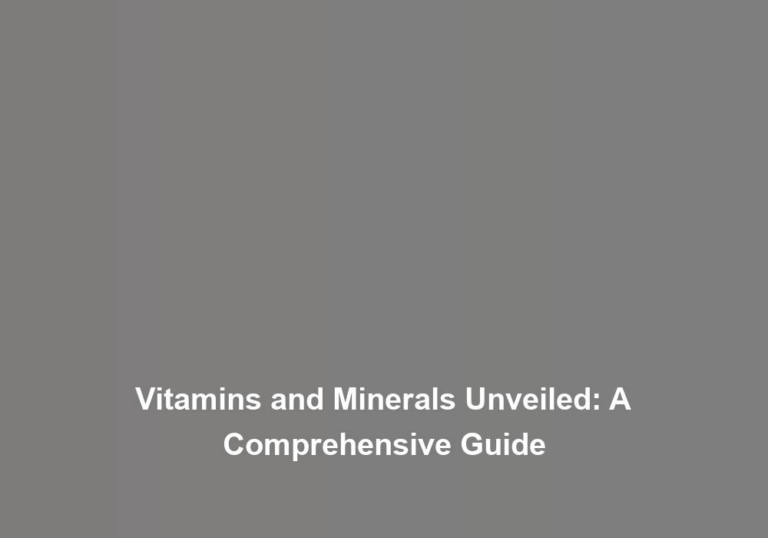Mineral Insights: Navigating the World of Key Minerals
You know the importance of staying ahead in a constantly evolving global market. But have you considered the critical role that key minerals play in shaping this landscape? As the demand for these essential resources continues to rise, understanding the intricate web of supply, environmental impacts, and ethical considerations becomes increasingly crucial. In todayG??s interconnected world, navigating the complexities of key minerals is more than just a business concern – itG??s a strategic imperative. So, how can you effectively navigate this intricate web and secure a stable supply of key minerals in the face of growing global demand and shifting dynamics?
Importance of Key Minerals
Understanding the vital role that key minerals play in maintaining optimal health and bodily functions is essential for making informed dietary choices and ensuring overall well-being. Key minerals such as calcium, potassium, magnesium, and iron are indispensable for various physiological processes. Calcium, for instance, is crucial for bone strength and density, muscle function, and nerve transmission. Potassium regulates fluid balance, muscle contractions, and nerve signals. Magnesium plays a significant role in energy production, muscle function, and DNA synthesis. Iron is essential for oxygen transport in the blood and energy metabolism. These minerals are not only vital for human health but also have significant industrial applications. For instance, calcium is widely used in the production of cement, potassium in fertilizers, magnesium in the automotive industry, and iron in steel production. Understanding the role of these minerals in both health and industrial contexts provides a comprehensive perspective on their significance in our lives.
Beyond their role in health, these key minerals are essential in various industrial processes. Calcium, for instance, is a key component in the production of cement, concrete, and glass. Potassium is a crucial ingredient in fertilizers, supporting agricultural productivity and food supply. Magnesium is used in the manufacturing of lightweight alloys for aerospace and automotive applications, making vehicles more fuel-efficient. Iron, as a fundamental component of steel, is indispensable in construction, infrastructure, and manufacturing. Therefore, the significance of key minerals extends beyond their role in maintaining human health to encompass a wide range of industrial applications, underlining their fundamental importance in both biological and industrial contexts.
Global Supply and Demand Dynamics
The intricate interplay between global supply and demand dynamics for key minerals is a critical determinant of industrial operations and economic stability. Understanding the supply chain and market trends is pivotal in navigating the complex landscape of key minerals.
| Supply Chain Stage | Market Trends | Impact on Industry |
|---|---|---|
| Exploration | Increasing | Uncertainty |
| Extraction | Fluctuating | Cost implications |
| Processing | Stable | Technological shifts |
| Distribution | Declining | Global market reach |
The supply chain stage is a crucial aspect of global supply and demand dynamics. The exploration phase is witnessing increasing trends due to the continuous search for new mineral deposits. This trend brings uncertainty as it involves various geological, environmental, and political factors. Extraction, on the other hand, demonstrates fluctuating market trends, impacting the industry with cost implications. Processing, a stable stage in the supply chain, is experiencing technological shifts that are influencing the efficiency and environmental impact of mineral processing. Distribution, however, shows declining trends, affecting the global market reach of key minerals.
These market trends directly impact industrial operations and economic stability. The uncertainty in exploration can lead to challenges in securing reliable sources of minerals, while fluctuating extraction trends may result in variable production costs. Stable processing trends offer opportunities for technological advancements, but declining distribution trends may limit market access. Understanding these dynamics is imperative for stakeholders to navigate the global landscape of key minerals effectively.
Environmental and Ethical Considerations
Navigating the global landscape of key minerals necessitates a comprehensive consideration of the environmental and ethical implications inherent in their extraction and processing. As the demand for key minerals continues to rise, understanding the environmental impact and ethical sourcing of these resources is crucial for sustainable and responsible practices.
When it comes to environmental impact, the extraction and processing of key minerals can result in habitat destruction, soil and water contamination, and increased carbon emissions. To mitigate these effects, companies must invest in innovative technologies and best practices that minimize ecological harm. Additionally, the restoration of mined areas and the implementation of strict environmental monitoring processes are essential for reducing the overall environmental footprint.
Ethical sourcing is another critical aspect to consider. The mining industry has historically been associated with labor exploitation, human rights abuses, and funding of armed conflicts. To address these concerns, companies must prioritize fair labor practices, uphold human rights standards, and engage in transparent trade. This includes supporting local communities, respecting indigenous rights, and ensuring that the supply chain is free from conflict minerals.
Technological Innovations and Trends
Technological advancements in mineral extraction and processing are revolutionizing the industryG??s efficiency and sustainability. These advancements are not only improving the extraction process but also reducing the environmental impact. One key innovation is the use of advanced data analytics and machine learning to optimize extraction processes. These technologies allow for real-time monitoring and adjustment of mineral processing, enhancing efficiency and reducing waste.
Furthermore, the integration of automation and robotics in mineral extraction is streamlining operations. Automation enables continuous extraction and processing, reducing downtime and increasing overall productivity. This has a significant market impact, as it allows for higher production rates and cost reduction, ultimately benefiting both producers and consumers.
Another significant trend is the development of more environmentally friendly extraction and processing methods. For instance, the use of bioleaching, a process that employs microorganisms to extract metals from ores, is gaining traction. This method is not only more sustainable but also reduces the need for harsh chemicals, minimizing the environmental impact of mineral extraction.
Moreover, advancements in mineral processing technologies, such as advanced filtration and separation techniques, are improving the quality of the final mineral products. This not only meets market demands for high-quality minerals but also reduces waste and enhances the overall sustainability of the industry. These technological advancements are shaping the future of mineral extraction and processing, driving efficiency, sustainability, and market competitiveness.
Strategies for Securing Key Minerals
Securing key minerals requires a comprehensive approach that encompasses exploration, strategic partnerships, and risk management. To effectively secure key minerals, consider the following strategies:
-
Diversify Supply Chain: It is essential to diversify the sources of key minerals to mitigate the risks associated with overreliance on a single supplier or region. By broadening the supply chain, you can reduce vulnerability to geopolitical disruptions and market fluctuations.
-
Forge Strategic Partnerships: Collaborating with mining companies, governments, and research institutions can enhance access to key minerals. Establishing strategic partnerships enables shared investment in exploration, development, and production, contributing to a more secure supply of key minerals.
-
Assess Geopolitical Implications: Understanding the geopolitical implications of key mineral supply is critical. Factors such as trade policies, international relations, and regional stability can significantly impact the availability of key minerals. By conducting thorough geopolitical assessments, you can proactively manage risks and identify opportunities for securing key mineral resources.
Conclusion
In conclusion, navigating the world of key minerals is like embarking on a complex puzzle, where each piece is crucial for a sustainable and innovative future. By understanding the importance of these minerals, analyzing global supply and demand dynamics, and considering environmental and ethical factors, we can create strategies to secure these vital resources. With technological innovations and trends shaping the landscape, staying informed and proactive is essential for meeting the challenges and opportunities ahead.







